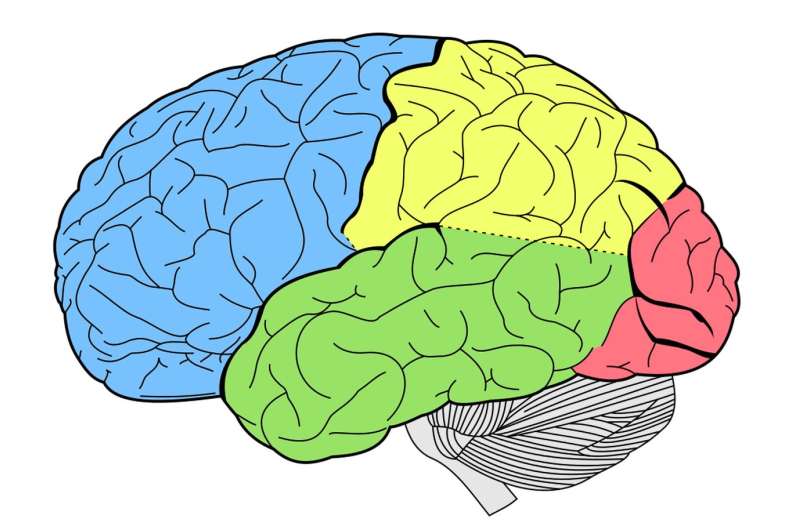
Credit: CC0 Public Domain
Globally, the number of people living with, or dying from, neurological conditions such as stroke, Alzheimer’s disease and other dementias, and meningitis has risen substantially over the past 30 years due to the growth and aging of the global population as well as increased exposure to environmental, metabolic, and lifestyle risk factors. In 2021, 3.4 billion people experienced a nervous system condition, according to a major new analysis from the Global Burden of Disease, Injuries, and Risk Factors Study (GBD) 2021, published in The Lancet Neurology.
The analysis suggests that worldwide, the overall amount of disability, illness, and premature death—a measurement known as disability-adjusted life years (DALYs)—caused by neurological conditions increased by 18% over the past 31 years, rising from around 375 million years of healthy life lost in 1990 to 443 million years in 2021.
The absolute number of DALYs is increasing in large part due to aging and growing populations worldwide.
However, if the impact of demographics is removed through age-standardization, rates of DALYs and deaths caused by neurological conditions have declined by around a third (27% and 34% respectively) worldwide since 1990—largely due to better awareness, vaccination, and global prevention efforts for some conditions such as tetanus (93% decrease in age-standardized rates of DALYs), meningitis (62% decrease), and stroke (39% decrease).
The top 10 contributors to neurological health loss in 2021 were stroke, neonatal encephalopathy (brain injury), migraine, Alzheimer’s disease and other dementias, diabetic neuropathy (nerve damage), meningitis, epilepsy, neurological complications from preterm birth, autism spectrum disorder, and nervous system cancers. Neurological consequences of COVID-19 (cognitive impairment and Guillain-Barré syndrome) ranked 20th, accounting for 2.48 million years of healthy life lost in 2021.
The most prevalent neurological disorders in 2021 were tension-type headaches (around 2 billion cases) and migraines (about 1.1 billion cases). Diabetic neuropathy is the fastest-growing of all neurological conditions.
“The number of people with diabetic neuropathy has more than tripled globally since 1990, rising to 206 million in 2021,” said co-senior author Dr. Liane Ong from the Institute for Health Metrics and Evaluation (IHME), University of Washington. “This is in line with the increase in the global prevalence of diabetes.”
The current study builds on previous GBD analyses to provide the largest and most comprehensive analysis to compare the prevalence and burden (illness and death) of nervous system disorders between countries on a global scale between 1990 and 2021—expanding the number of studied neurological conditions from 15 to 37 that span from birth to later life.
To better reflect that neurological disorders can occur at any stage of life, for the first time, the GBD 2021 Nervous System Disorders Collaborators studied neurodevelopmental disorders and neurological conditions in children and found that they were responsible for almost a fifth (18%) of all DALYs in 2021, accounting for 80 million years of healthy life lost worldwide.
“Every country now has estimates of their neurological burden based on the best available evidence,” said lead author Dr. Jaimie Steinmetz from IHME. “As the world’s leading cause of overall disease burden, and with case numbers rising 59% globally since 1990, nervous system conditions must be addressed through effective, culturally acceptable, and affordable prevention, treatment, rehabilitation, and long-term care strategies.”
The study, conducted to inform ongoing advocacy and awareness efforts, will support the WHO’s Intersectoral Global Action Plan on Epilepsy and Other Neurological Disorders 2022–2031 (IGAP) that aims to reduce the impact and burden of neurological disorders and improve the quality of life of people with neurological disorders as well as their caregivers and families.
Over 80% of neurological deaths and health loss occur in low- and middle-income countries (LMICs)
Overall, estimates reveal striking differences in nervous system burden between world regions and national income levels. In high-income Asia Pacific and Australasia—regions with the best neurological health—the rate of DALYs and deaths were under 3,000 and 65 per 100,000 people, respectively, in 2021. In these regions, stroke, migraine, dementia, diabetic neuropathy, and autism spectrum disorders accounted for most health loss.
In contrast, in the worst-off regions of western and central sub-Saharan Africa, the rate of DALYs and deaths were up to five times higher (over 7,000 and 198 per 100,000 people, respectively) in 2021, with stroke, neonatal encephalopathy (brain injury), dementia, and meningitis the biggest contributors to years of healthy life lost.
“Nervous system health loss disproportionately impacts many of the poorest countries partly due to the higher prevalence of conditions affecting neonates and children under 5, especially birth-related complications and infections,” said Dr. Tarun Dua, Unit Head of WHO’s Brain Health unit and one of the co-senior authors of the study.
“Improved infant survival has led to an increase in long-term disability, while limited access to treatment and rehabilitation services is contributing to the much higher proportion of deaths in these countries.”
The authors highlight that, as of 2017, only a quarter of countries globally had a separate budget for neurological conditions, and only around half had clinical guidelines. What’s more, the medical personnel who care for people with neurological conditions are unevenly distributed around the world, with high-income countries having 70 times more neurological professionals per 100,000 individuals than LMICs.
Prevention needs to be a top priority
“Because many neurological conditions lack cures and access to medical care is often limited, understanding modifiable risk factors and the potentially avoidable neurological condition burden is essential to help curb this global health crisis,” said co-lead author Dr. Katrin Seeher, Mental Health Specialist at WHO’s Brain Health Unit.
The study quantified the proportion of nervous system burden that was potentially preventable by eliminating known risk factors for stroke, dementia, multiple sclerosis, Parkinson’s disease, encephalitis, meningitis, and intellectual disability.
The analysis suggests that modifying 18 risk factors over a person’s lifetime—most importantly, high systolic blood pressure (57% of DALYs)—could prevent 84% of global DALYs from stroke.
Additionally, estimates suggest that controlling lead exposure could reduce the burden of intellectual disability by 63% while reducing high fasting plasma glucose to normal levels could reduce the burden of dementia by around 15%.
“The worldwide neurological burden is growing very fast and will put even more pressure on health systems in the coming decades,” said co-senior author Dr. Valery Feigin, Director of Auckland University’s National Institute for Stroke and Applied Neuroscience in New Zealand.
“Yet many current strategies for reducing neurological conditions have low effectiveness or are not sufficiently deployed, as is the case with some of the fastest-growing but largely preventable conditions like diabetic neuropathy and neonatal disorders. For many other conditions, there is no cure, underscoring the importance of greater investment and research into novel interventions and potentially modifiable risk factors.”
“Nervous system conditions include infectious and vector-borne diseases and injuries as well as non-communicable diseases and injuries, demanding different strategies for prevention and treatment throughout life,” said Steinmetz
“We hope that our findings can help policymakers more comprehensively understand the impact of neurological conditions on both adults and children to inform more targeted interventions in individual countries, as well as guide ongoing awareness and advocacy efforts around the world.”
Despite these important findings, the authors note several limitations, including that, while they have done their best to capture all nervous system health loss, some conditions were left out because they could not isolate the neurological component, including infections such as HIV, which has a large impact in many parts of the world. While the study uses the best available evidence, estimates are constrained by the quantity and quality of data, especially in LMICs.
Writing in a linked Comment, Professor Wolfgang Grisold, President of the World Federation of Neurology, London, UK (who was not involved in the study), says, “This important new GBD report highlights that the burden of neurological conditions is greater than previously thought. In the next iteration, more attention should be given to neuromuscular diseases, the effects of cancer in the nervous system, and neuropathic pain.”
“Comparing the disability caused by conditions with episodic occurrence versus those that cause permanent and progressive disease will remain challenging, because the effects on the individuals vary substantially.”
More information:
Global, regional, and national burden of disorders affecting the nervous system, 1990–2021: a systematic analysis for the Global Burden of Disease Study 2021, The Lancet Neurology (2024). DOI: 10.1016/S1474-4422(24)00038-3
Citation:
Neurological conditions now leading cause of ill health and disability globally, new analysis finds (2024, March 14)
retrieved 20 May 2024
from https://medicalxpress.com/news/2024-03-neurological-conditions-ill-health-disability.html
This document is subject to copyright. Apart from any fair dealing for the purpose of private study or research, no
part may be reproduced without the written permission. The content is provided for information purposes only.
Note: This article have been indexed to our site. We do not claim legitimacy, ownership or copyright of any of the content above. To see the article at original source Click Here













